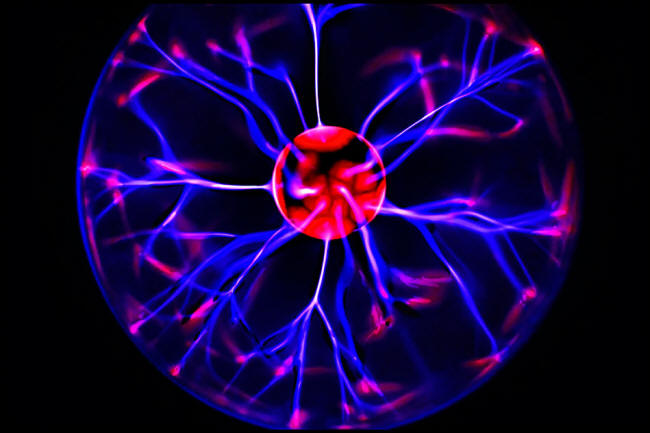|
by Avi Loeb
a particle of light - the photon, is massless.
Hence, a free photon propagates at the limiting speed of light...
However, in a plasma of free electrons, the photon acquires a mass.
The square of the photon energy, E, equals the square of the product between the photon momentum and the speed of light, pc, plus the square of the photon rest-mass energy, mc˛.
The photon rest-mass energy equals Planck's constant times the so-called plasma frequency. The plasma frequency scales as the square root of the electron density.
If the density is tuned so that it exactly matches the photon frequency, we get E=mc˛, and the light stands still without propagating at all.
I did my PhD in plasma physics and used this fundamental insight in diagnosing the density of clouds of free electrons.
We now know that the Universe was filled with free electrons during the first 400,000 years after the Big Bang as well as during the last 12.8 billion years of cosmic history, after the so-called 'epoch of reionization,' which I studied extensively during most of my career in astrophysics.
The associated delay in the propagation speed of radio photons is indeed observed for Fast Radio Bursts, transient radio pulses detected from cosmic distances and typically lasting a thousandth of a second.
The photon mediates electromagnetism.
In 1938, the physicist Hideki Yukawa published a theory which explained the short-range strong interaction among protons and neutrons as the exchange off mesons, an insight for which he received the Nobel Prize in 1949.
In the static limit, the related interaction potential scales inversely with distance like the potential of an electric charge, supplemented by an extra exponential factor containing minus of the distance in units of the de Broglie wavelength of the relativistic meson, h/mc, where h is Planck's constant.
Applying this result to a massive photon in a plasma, would suggest exponential suppression of the static electric potential of a charge embedded in a plasma. This is indeed the case.
An electric charge is exponentially screened in a plasma over the so-called Debye length which equals the de Broglie wavelength of the electrons at their characteristic thermal speed.
Photons with a frequency below the plasma frequency cannot penetrate a plasma and decay exponentially over a skin depth equal to h/mc. Mirrors reflect light because they are coated with a metallic surface containing free electrons.
Next time you look at the mirror, keep in mind that you see yourself because the plasma frequency of the mirror's metallic coating exceeds the frequency of the photons bouncing of it. High-energy gamma-rays would pierce through the mirror and not get reflected.
In 1992, I wrote a paper (Dynamics and Gravitational Interaction of Waves in Nonuniform Media) with the plasma physicist, Russell Kulsrud, which addressed a fundamental question about the mass of light...
The equivalence principle in Albert Einstein's gravity postulates that,
Russell and I showed that this is indeed the case for a uniform plasma, properly defined in a gravitational field.
In other words,
Since the photon mass depends on the electron density, it can also be viewed as an index of refraction of the background medium.
Lenses in eyewear glasses are shaped so as to focus or defocus light based on the index of refraction of the material they are made of.
Light rays are deflected for the same reason.
A cloud of free electrons tends to defocus light whereas gravity of clustered mass tends to focus light. For most astrophysical systems, like galaxies or clusters of galaxies,
The Webb telescope's images of galaxy clusters display beautiful examples of background sources being gravitationally lensed.
This week, the first zig-zag lens was reported in which two lenses are at play along the line-of-sight. Gravitational lensing could also be framed in terms of an effective index-of-refraction of spacetime relative to empty space.
Before my morning jog today, I derived the mass of the graviton, which mediates gravitational interactions, in analogy to the mass of the photon in a plasma, by replacing the electromagnetic coupling in the plasma frequency with the gravitational coupling to the background medium.
At the mean density of the Universe, I calculated the de Broglie wavelength of the massive graviton to be 5 times larger than the cosmic horizon. Hence, this graviton mass has no consequence for cosmology within the observable volume of the Universe.
The mass acquired by the interaction of a photon with a plasma is reminiscent of the so-called Higgs mechanism by which all massive particles gain their mass and for which the Physics Nobel Prize was awarded in 2013.
Analogies of this type display the beauty of nature.
Nevertheless,
As I told a reporter today,
What we can imagine is a small part of what might be out there.
|


